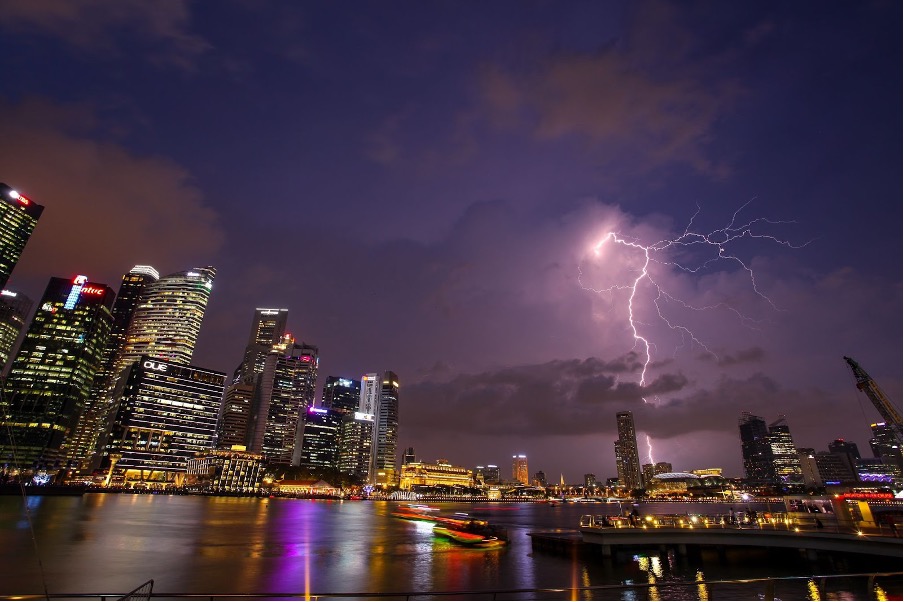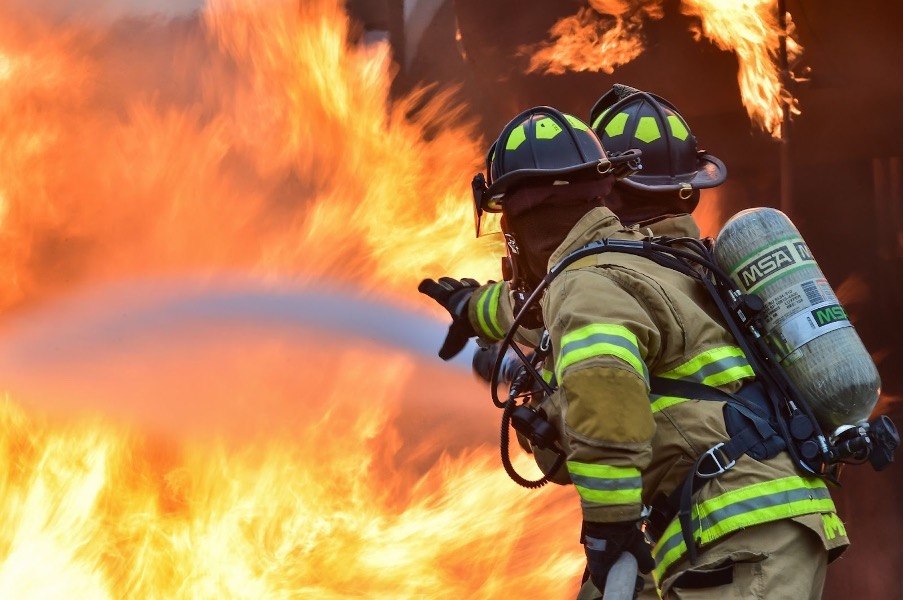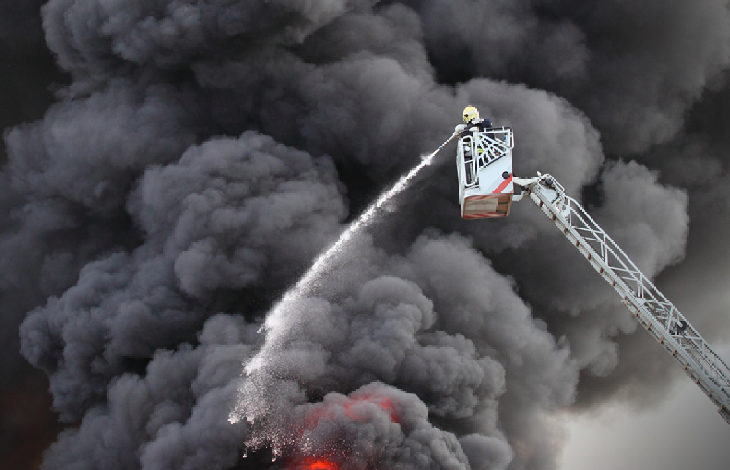Australia is known for bush fires and floods. With the changing climate and weather patterns throughout Australia, there has been an increase in extreme weather events. Recently we have witnessed extreme droughts, devastating fires and floods with more intensity and frequency.
As the recent extreme storms and flooding in Northern NSW and Southern QLD have shown, this exposes people, property and businesses to injury, property loss or damage and the inability for businesses to trade.
So, planning for the type of extreme weather that impacts your region, whether it’s cyclones, bush fires or storms, is a great start to protecting your staff and minimising the financial impact on your business.
It’s essential to know the main weather risks in your area: hail, fire, storms, or floods.
A report from the Financial Rights Legal Centre identified that between November 2019 and April 2021, storm-related matters made up 42% of insurance claims, followed by hail with 23%, bushfires with 20%, and flood claims at 13%.
Time and clear thinking are of the essence in emergencies. So the best way for you and your staff to manage in an extreme weather event is by having an emergency plan to deal with the immediate threats to life and property, then having a business continuity plan to get the business back to trading in the short and medium-term.

Emergency Plans – Basics
If an extreme weather event is imminent, you need an up to date emergency plan. Also, ensure that you have discussed this with your employees and that they understand their roles. There are lots of free guides and plans available, like the NSW Emergency Planning for Workplaces.
The plan should include:
- Monitoring local radio for updates on severe weather warnings in your district;
- Preparing a plan that includes key people's contact information and their roles, including insurance details and adviser information;
- Rehearsing responses for specific weather events and evacuation procedures;
- Pre-packing an emergency kit that includes a portable radio, torch, spare batteries and a first aid kit;
- Having emergency equipment on standby (e.g. tarps, rope, nails, hammer, timber, sandbags) to protect plant, stock and other building contents if the storm damages the roof or wall structure;
- Isolating water, gas and electrical power supplies when severe storms are forecast to prevent further damage and personal injury from ruptured pipes or fallen power lines.

Storms & Flash Floods
People
Having plans in place for employees and customers at the premises is wise, but it also meets your OH&S requirements to keep workers and visitors safe. Issues such as evacuation routes, remote location workers and training on emergency plans are some of the problems that will need to be addressed.
Stock & equipment
This will vary from business to business, depending on the size of the business, nature of the work being carried out and if there are high-risk chemical processes and major hazard facilities.
Items to be considered include shelving and racking systems, packaging and inventory management to keep stock and equipment dry and secure.
Buildings & infrastructure
Stormwater and flash floods can cause water damage to contents and stock.
Stormwater can move at 2.7 metres per second and cause significant damage to building structures and expose people to injury and even death.
Building and property maintenance are essential parts of any plan, including roofing and drainage. The local council is also likely to have information on stormwater flash flooding and flooding from any creeks and rivers in the area.
Have emergency equipment on standby (e.g. tarps, rope, nails, hammer, timber, sandbags) to protect plant, stock and other building contents if the storm damages the roof or wall structure. Also, isolating water, gas and electrical power supplies when severe storms are forecast may prevent people from being injured or additional property damage.
Secure business records
Although many businesses keep records in cloud servers, consideration should be given to securing any paper records and documentation. These are best stored in waterproof safes or cabinets, with a copy kept in an off-site location.
Business continuity
A Business Continuity Plan is a plan to minimise the disruption to customers and staff, then get the business back to trading as soon as possible to reduce the financial impact. There are lots of free resources, including one from Business Australia, ‘Create or update your Business Continuity Plan’, which has templates, how-to and a list of expert advisers if needed.
Business interruption insurance is ideal for managing the financial risk when your business is closed, or trading is reduced due to damage.
Storm & flood insurance
With the changing weather patterns throughout Australia and the increase in the number and extent of extreme weather events, it’s essential to know what cover you have.
The recent storms in NSW & QLD caused many deaths and damage to over 150,000 homes and properties, with $2 billion in claims.
While storms and stormwater causing flash flooding are usually insured, flood cover must be specifically agreed upon. Many insurers only offer flood cover on request at an additional premium. At the same time, businesses in known flood-prone areas find flood insurance challenging to obtain or very expensive. You should check whether your insurance provides flood cover and if this is a risk to your business.
Bushfires
Bushfires are another regular feature of Australia. The 2019 – 2020 bushfires along the East Coast and SA caused 34 deaths, destroyed thousands of homes and buildings and resulted in billions of dollars in property damage. Again there are a lot of free resources online, including the Business QLD Bushfire Preparation checklist.

People
Having a Plan in place for employees and customers at the premises is wise, but it also meets your OH&S requirements to keep workers and visitors safe. Issues such as evacuation routes, remote location workers' safety and discussion and training on emergency plans are some of the top issues that will need to be addressed.
Planning should include training on emergency responses and evacuation procedures, and available emergency kits. There is lots of free information on the web, such as this Bushfire Business Planning checklist from CFS SA.
Buildings
If your business is in a bushfire-prone area, there are steps you can take to minimise the bushfire risk, such as removing the surrounding leaf litter and small shrubs close to your building and tree limbs overhanging the building.
It is also essential to store any flammable materials, such as gas, wood, petrol and paint away from your building in fireproof enclosures. It is also recommended that ladders be kept close to access the roof. Consulting with the local fire brigade is also important.
Business continuity
Business continuity plans are vital no matter the emergency, making it vital that you develop a plan that identifies and analyses the risks to your business from a bushfire.
A Business Continuity Plan minimises the disruption to customers and staff due to the fire, then gets the business up and running as soon as possible to reduce the financial impact.
Bushfire insurance
Most, if not all, insurance policies cover fire damage, including due to bush fires. If you live in a bushfire provide area, some insurers may charge a higher premium for the increased risk. It’s worthwhile understanding your cover and also shopping around.
Ensuring the Right Cover
It’s important that you have the right insurance for your needs, including the correct amount of cover. Insurance policies ask for the sum insured that is to be covered for buildings, plant and equipment, stock and contents. The sum insured should be the value to replace or rebuild. If it’s less than the value at the time of the damage, it may result in a claim payment that is less than you were expecting.
Underinsurance is a surprisingly common issue, with 20% of homes being insured during the recent bushfires. The key to avoiding underinsurance is to:
- Ensure your sums insured are up to date;
- Check your policy cover annually;
- Update valuations for the major assets, usually buildings, plant and machinery and stock.
Work with your nearest Insurance Advisernet professional adviser today, who can guide you with Emergency Planning and Business Continuity. We pride ourselves on being informed about risk and insurance and ensuring you have the right insurance policy for your needs.
Important Information
This communication including any weblinks or attachments is for information purposes only. It is not a recommendation or opinion, your personal or individual objectives, financial situation or needs have not been taken into account. This communication is not intended to constitute personal advice.
We strongly recommend that you consider the suitability of this information, in respect of your own personal objectives, financial situation and needs before acting on it. This document is also not a Product Disclosure Statement (PDS) or a policy wording, nor is it a summary of a particular product’s features or terms of any insurance product. If you are interested in discussing this information or acquiring an insurance product, you should contact your insurance adviser to obtain and carefully consider any relevant PDS or policy wording before deciding whether to purchase any insurance product.







